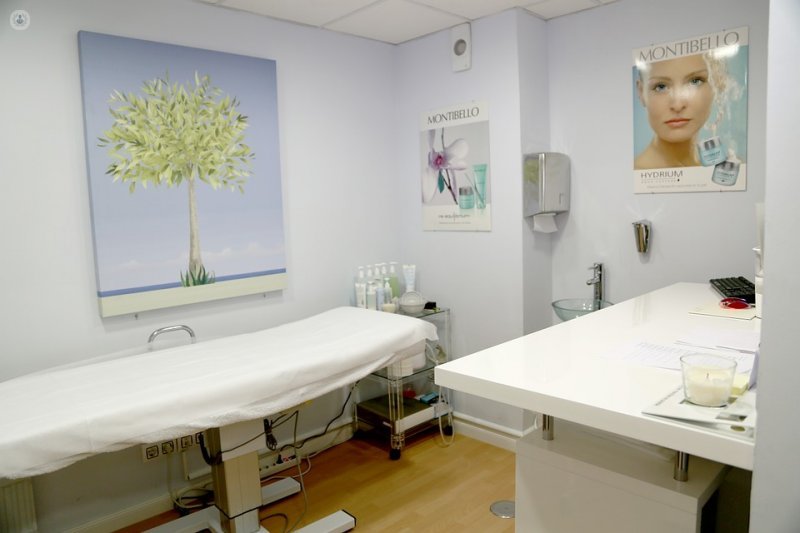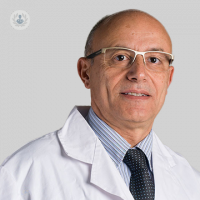Achondroplasia affects 1 in 20,000 newborns
Written by:Achondroplasia is a disorder in the growth of the skeleton commonly known as dwarfism. It is the most frequent bone dysplasia. It produces a very low and disproportionate size, which gives a result of very short extremities.
The gene that transmits the disease has been located on chromosome 4p16.3. Its frequency in the population ranges from 1 / 20,000 to 1 / 30,000 live births.

Causes of achondroplasia
In most cases, achondroplasia is the result of a de novo, spontaneous, random mutation in parents who are totally normal. These parents have a low risk in another pregnancy of having another affected child.
In many studies it is observed that when the father is older than 37 years, there is more risk of the child suffering from this disease due to the mutations that occur in the sperm over the years.
Achondroplasia is inherited in an autosomal dominant form. A father or mother affected with achondroplasia and a normal partner have a 50% risk in each pregnancy of having a child with achondroplasia. If both parents have achondroplasia, the risk in the offspring is 25% of having a child with average height, 50% of having a child with achondroplasia and 25% of having a son with homozygous achondroplasia (condition that is fatal) .
Prenatal diagnosis in pregnancies at risk for achondroplasia is possible when the mutation causing the disease has already been identified in the family.
Achondroplasia: symptoms
Most children can be diagnosed only by clinical symptoms, but in practice specialists always request the molecular demonstration of the disease on chromosome 4.
These children have a very low size, lower than the 3rd percentile, a shortening of the proximal part of the upper and lower extremities (rhizomial dwarfism), short fingers, hand "in trident" when open, limitation to the extension of the elbows, genu varus or legs "in parentheses", joint instability in the knee and other joints, thoracolumbar kyphosis when they are small and lumbar hyperlordosis that appears after wandering, large head with prominent forehead, little development of the nasal bridge with medico-facial area " inside "offering a characteristic face appearance.
Their muscle tone is low and the psychomotor development is slower which causes them to walk alone later than other children, sometimes at 21 months of age.
The IQ is normal unless a hydrocephalus or a complication of the central nervous system appears.
It is very important, both in children and adults, to monitor obstructive sleep apnea due to the small airway they have, the hypertrophy of tonsils and adenoids that tend to develop in many cases and the poor innervation of the airway musculature with secondary hypotonia. Eustachian tube dysfunction with seromucosal otitis produces, in many cases, hearing loss and alteration in language progression. In adults, the narrowing of the lumbar spinal canal can produce changes in gait or continence.
In outpatient visits to patients with dwarfism, it is important to control weight, height, cranial perimeter, thoracic perimeter, assessment of the instability or not of the craniocervical junction, periodic neurological examinations, sometimes a CT or cranial MRI. polysomnography if there are alterations in the sleep rhythm
The approximate adult size is 131 +/- 5cm in men and 124 +/- 5cm in women. Obesity becomes an important problem over time as it aggravates the underlying morbidity that they have secondary to their disease.
It is important that people suffering from achondroplasia avoid risk sports for them such as impact, collision, somersault or the use of trampolines given the instability of the craniocervical junction.
The radiographs performed on these children show characteristic findings, especially with narrowing of the distance between the pedicles in the caudal vertebrae and short bones with thickened tubular areas.
Treatment for achondroplasia
Although the affectation of the stature is the most striking and, sometimes, in all that is thought, the people affected by achondroplasia may need attention in many organs or devices.
From a ventriculoperitoneal shunt for hydrocephalus (fortunately in a few cases) to transtympanic drainage for persistent seromucosa otitis, reduction of adenoids and removal of tonsils for obstructive apneas, a CPAP for persistent apneas in older children, neurosurgery if there is stenosis at the cervical level with involvement of the medulla or osteotomies in the lower extremities if there are very marked tibias varas.
Although there have been medical trials of hormone treatment with growth hormone, the results are not good or encouraging to date and this treatment is not recommended.
Nor have any effective diets, vitamin supplements, or other therapies studied.
For more than 30 years, in the Hospital Universitari Dexeus elongation of extremities with extensions of 15 cm per bone (30 cm total, 15cm in the warm tibia and another 15cm in the femur) has been performed, achieving that its size at a social level is acceptable ; about 150cm as desirable. There are different techniques and methods of elongation and we can boast in our center of very good results with children when they get older (ICATME method). Not all parents, nor all doctors, nor all parent groups accept extensions.
These patients need to be taken care of by multidisciplinary teams, since they need experience and anticipation of their potential and different and varied problems.. Getting a good socialization and psychological support of the child and his family is very important and regular meetings with parent groups are very helpful. Genetic counseling should always be there.
Fortunately, research and progress in medicine is not stopped and a clinical trial is being conducted treating these patients with drugs. It consists of a drug to inhibit the inhibitor that does not allow bone to grow and restore bone growth. If the years show good results with few or no side effects limb elongations would probably cease to practice or be reduced to selected cases or cases that did not respond to treatment or could not be performed for any other reason. At the end of 2016 the study begins in phase 3.


